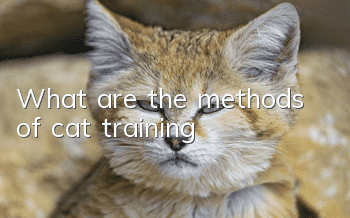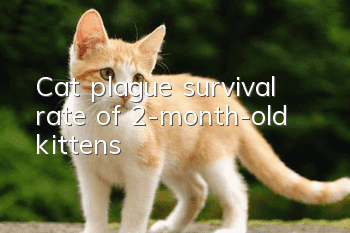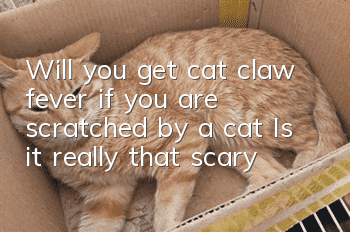How to raise Burmese cats?

At present, pets have entered thousands of households, and the number of pets raised in China is also increasing. Burmese cats are also popular because they are lively, active, soft-sounding, interesting in conversation, expressive, brave, intelligent, and love to act coquettish. Loved by many pet friends, raising Burmese cats is not like raising dogs. Every move they make needs to be carefully cared for by the owner. Therefore, you must learn how to raise them to give Burmese cats a healthy and happy growth environment.
Burmese cat
Care for Burmese cats
The skin and cat coat are a solid barrier for cats. They can prevent the loss of water in the body, resist certain mechanical damage, and protect the body from harmful physical and chemical effects.
The skin and coat have good thermal insulation properties in cold winter, giving cats a strong ability to keep out the cold. In summer, the coat acts as a large radiator, reducing body temperature.
There are many receptors in the cat's skin that can sense changes in the internal and external environment. Receptors can sense one or several types of stimuli, such as cold, heat, touch, pressure, pain, etc.
The cat's coat grows from the hair follicles in the skin, and the hair follicles are elongated and bag-shaped. There are two types of cat hair follicles, one is an isolated hair follicle with only one hair, and the other is a compound hair follicle with multiple hairs. Cat hair follicles are mainly composed of composite hair.
Therefore, the cat's coat is very dense, about 200 hairs per square millimeter. The coat can be divided into two types: guard hair and down. Cats also have sebaceous glands and sweat glands in their skin. The secretion of sebaceous glands is oily and can make the coat shiny and smooth. Cat sweat glands are underdeveloped and cannot regulate body temperature like human sweat glands. Its heat dissipation is mainly through skin radiation or breathing.
Feeding of Burmese cats
For the first few weeks of life, kittens rely entirely on breast milk and do not need additional food. During this period, the ideal growth rate should be 100 grams per week. However, due to the influence of nutrition, breed and female cat weight, there are great differences between different individuals. Sometimes when the supply of breast milk is insufficient, special milk substitutes should be provided and supplied in batches 24 hours a day and night. Just like puppies, not only artificial assistance is required for breastfeeding, but also artificial assistance for urination and defecation.
From the age of 3-4 weeks, kittens begin to be interested in the mother cat’s food. You can give the kitten some finely chopped soft food or dry food soaked in milk or water. The food can be for the mother cat or specially prepared for the kittens. Once the kitten starts eating solid food, the weaning process begins. Kittens gradually eat more and more solid food and are completely weaned at 7-8 weeks of age.
Recently, WCPN (Munday and Earle, 1991) has begun to investigate the amount of energy cats obtain from solid food before they are completely weaned. At 4 weeks of age, kittens consume onlyEat about 10g (10-40 kJ/kg body weight) of food, and most of the rest is still supplied by breast milk. By the age of 5 weeks (the 6th week of lactation), each kitten eats 15-45g of food per day, which is equal to 250-350 kJ/kg of body weight (depending on the energy density of the diet). The energy intake of kittens from solid food increases from zero at 2 or 3 weeks of lactation to more than 800 kJ/kg of body weight at 8 weeks of age. This shows that the food consumed by the kittens at the end of lactation accounts for a considerable proportion of the total energy consumption of the mother cat and kittens. Among the total intake of mother cats and kittens, the proportion of kittens' intake increased from 5% at 4 weeks of breastfeeding to 20% and 30% at 6 and 7 weeks.
Once a kitten is weaned, she no longer needs milk. As the digestive tract of kittens develops, their ability to digest lactose gradually weakens, and adult cats cannot digest lactose. If you want to give your kitten milk. Special lactose-free milk should be provided, and fresh drinking water should be provided at all times.
Because the kitten’s physiological functions are not yet complete, it is recommended to provide high-energy food and feed it multiple times. Unlike puppies, kittens do not like to overeat and should eat freely. The weight of kittens at weaning is 600-1000 grams, and male cats are significantly heavier than female cats. This trend will continue throughout their lives. The peak energy requirement (840 kJ/kg body weight) is around 10 weeks of age and gradually decreases thereafter. However, demand remains relatively high during the first 6 months due to rapid growth.
The food for kittens should not only be high in energy, but also consider increasing certain nutrients. For example: the protein content of kitten diet is higher than that of adult cats (about 10%). The content of calcium and phosphorus must be strictly maintained at appropriate levels, because excessive or insufficient levels will lead to abnormal bone development. It is also important to emphasize that adding calcium supplements to a balanced diet can cause many of the same problems as feeding an unbalanced diet. The role of taurine in reproduction, growth and development has been confirmed, and this aminoethanesulfonic acid should be added to the food of growing kittens.
By 6 months of age, most kittens have reached 75% of their maximum body weight; weight gain thereafter is not due to skeletal development. Therefore, kittens after 6 months old are suitable to feed adult cats. Adult male cats are significantly heavier than female cats and take longer to develop. Because both male and female cats are still growing slowly between the ages of 6 and 12 months, free feeding will continue for a period of time, and their development will reach a stable state by the time they are one year old. Although many people practice multiple feedings throughout the day, the frequency of feedings can be reduced after 6 months of age.
Burmese cat training
The first step in training a cat is to make it "responsive" to its name. The most effective way is to call the cat's name before eating. As long as it understands that it will get food when its name is called, it will naturally remember the pronunciation of its own name.
Don’t let your cat “recognize life” and train your cat to be a"Lover's" cat
It is very important to hold it and play with it often. Cats are inherently cautious animals. They usually ignore strangers and sometimes run away. Some people may think that as long as the relationship between a cat and its owner is close, it is satisfying, but if everyone around you recognizes and loves your favorite cat, it is ultimately a happy thing. Cats have diverse personalities, so cats that have been hugged and played with people since they were young will like to be close to people. But don’t let the cat feel bored by holding it all the time, and don’t hold the cat reluctantly.
Sometimes I play with the cat, throw a ball to it, or pet it while teasing it to have skin-to-skin communication. If the owner lives alone or has few family members, he or she can often let friends who like cats come to play at home and let the cat experience interacting with strangers.
- What should I do if my kitten always bites people?
- How to train a cat to be obedient?
- What are the types of cat anthelmintics? Common types of cat anthelmintics!
- What are the symptoms of a cat overeating? What should I do if my cat is full?
- Why do Persian cats have different eye colors?
- Do Siamese cats have yellow eyes? What kind of Siamese cat does your family have?
- Signs that a cat is hungry
- Why is Garfield so picky about food?
- What are the symptoms of depression in cats?
- Is it good to neuter female cats? Things to note when neutering female cats!



